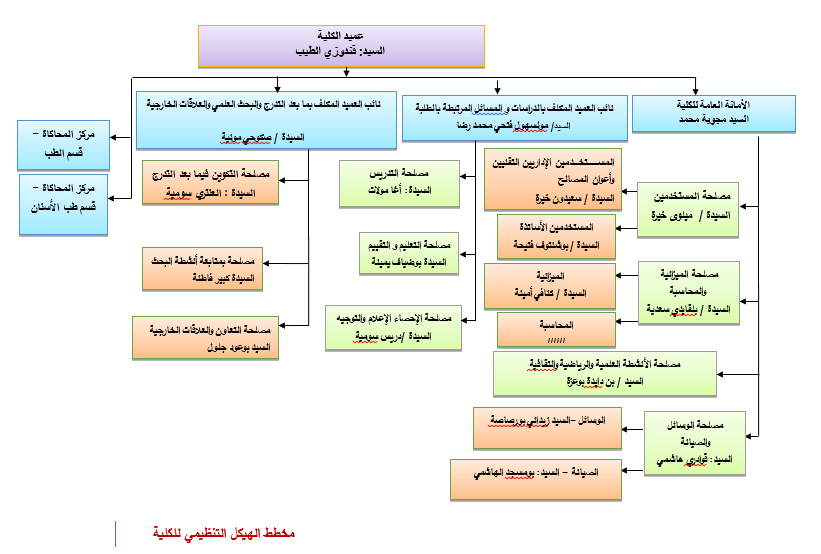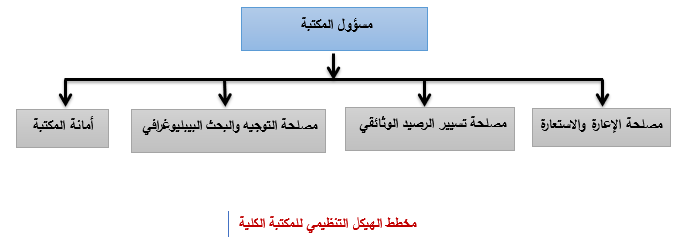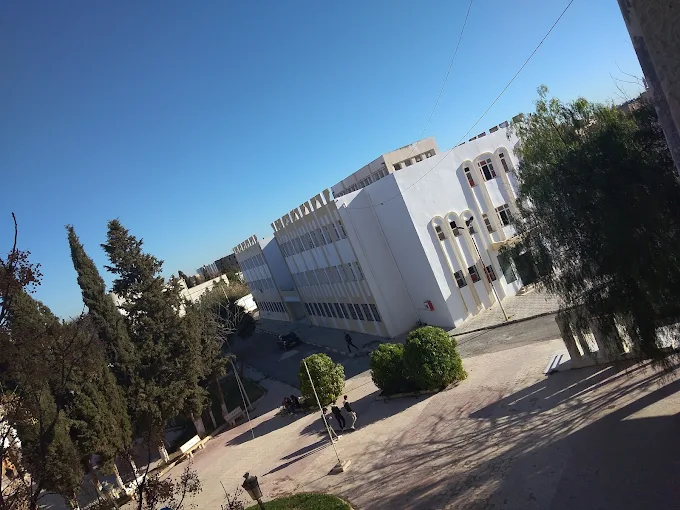
Organigramme de la faculté
Email /
Email /
Email /
The Faculty of Medicine is one of the eight teaching and research entities of the Djilali Liabès University of Sidi Bel Abbes.
It was established by Executive Decree No. 04-252 of August 29, 2004, which amended and supplemented Executive Decree No. 98-141 of August 1, 1989, establishing the Djilali Liabès University of Sidi Bel Abbes.
The faculty was established in 1981 as an institute with a staff of four teachers and 51 students.
In 1985, it was annexed to the INESSM of Oran until 1989, when it became the Institute of Medical Sciences. In 1993, a new organizational structure was introduced, resulting in the creation of the Faculty of Medicine.
It currently has three departments. The first department was the Department of Medicine, followed by the Department of Pharmacy and Dentistry.
The Faculty of Medicine includes:
7 lecture halls with a capacity ranging from 200 to 500 seats
11 tutorial rooms
12 laboratories
1 internet room
1 library
1 reading room with a capacity ranging from 100 to 150 seats
3 lecture halls
places pédagogiques
salles de conférences
Laboratoires
Amphithéatre
Centre de Simulation
Bibliotheque

Organigramme de la faculté

Bibliothèque de la faculté

Départements
Professor Taleb Mourad, born in the town of Sidi Bel-Abbès on December 11, 1928. He spent his entire schooling in his hometown. After graduating from high school, he went to France to begin medical studies. After a stint in Dijon, he returned to Lyon. He arrived in Tunisia on orders from the FLN in 1956. He remained at the border until the end of the war. With whatever resources he had, he participated in the care of the “Djounouds” evacuated to the eastern base. At the same time, he continued his training with Tunisian doctors and practitioners.
From the day after Independence, he invested himself, body and soul, in the establishment of an efficient health system in his country. From the eastern border where he spent the period of the National Liberation War, he found himself directly in Batna where he had opened the hospital of this city. Immediately after, he returned to Oran where with a small number of his companions he tried to restart the Oran University Hospital, deserted by French doctors. The task was not easy because he had to be on several fronts: respond to an ever-growing demand, participate in the training of medical staff and, above all, complete his own training, interrupted in 1956 to join the ranks of the ALN. Therefore, it was necessary, with the complicity of some of his comrades in the struggle, to set up a surgical pavilion. It is to him that the Oran University Hospital owes the pavilion bearing the number 14.
It was a conscious choice on his part. He had refused his father’s offer to open a private practice for him.
In the late 1960s, he was expected to complete his doctoral thesis and then become an associate professor.
However, he held several senior positions in academic institutions, notably at the Faculty of Medicine. But it was in 1986 that he was entrusted with the rectorship of the University …
He died on December 26, 2003. On the day of his funeral, the area surrounding his home was packed with people. Generations of doctors and hundreds of ordinary people accompanied him to his final resting place as a token of gratitude to a man who had dedicated his life to his country and his profession. He who went about his daily business without attracting the slightest attention.
The Faculty of Medicine of Sidi Bel-Abbès and the university campus of Oran 1 University bear the name “Professor Taleb Mourad Selim.”
Excerpt from an article published in the Oran daily newspaper.









Copyright © 2025 DJILLALI LIABES UNIVERSITY | FACULTY OF MEDICINE | SIDI BEL ABBES | ALGERIA